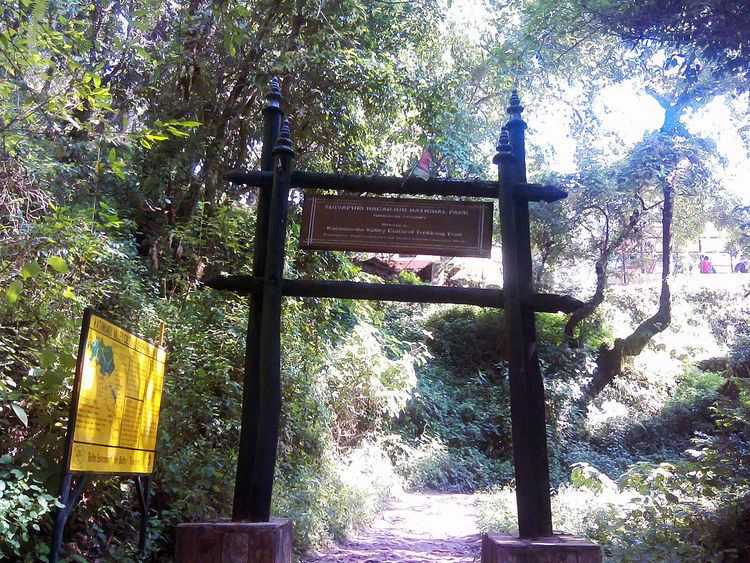Established 2002 | Area 159 km² Phone +977 1-4370355 | |
 | ||
Governing body Department of National Parks and Wildlife Conservation, Ministry of Forests and Soil Conservation | ||
Drive to shivapuri nagarjun national park
Shivapuri Nagarjun National Park is the ninth national park in Nepal and was established in 2002. It is located in the country's mid-hills on the northern fringe of the Kathmandu Valley and named after Shivapuri Peak of 2,732 m (8,963 ft) altitude. It covers an area of 159 km2 (61 sq mi) in the districts of Kathmandu, Nuwakot and Sindhupalchowk, adjoining 23 Village Development Committees. In the west, the protected area extends to the Dhading District.
Contents
- Drive to shivapuri nagarjun national park
- Sundarijal shivapuri nagarjun national park i kathmandu nepal
- History
- Climate
- Vegetation
- Fauna
- References
Sundarijal shivapuri nagarjun national park i kathmandu nepal
History
The area has always been an important water catchment area, supplying the Kathmandu Valley with several hundred thousands cubic liter of water daily. In 1976, the area was established as a protected watershed and wildlife reserve. In 2002, it was gazetted as Shivapuri National Park, initially covering 144 km2 (56 sq mi). It was extended by the Nagarjun Forest Reserve covering 15 km2 (5.8 sq mi) in 2009.
The park includes some historical and religious sites, and a popular hiking route for local people and tourists.
Shivpuri is described in the Skanda Purana's Nepalmahatmya as "auspicious place of Lord Shiva, filled with Shivalingams"
Climate
The park is located in a transition zone between subtropical and temperate climate. The annual precipitation of about 1,400 mm (55 in) falls mostly from May to September, with 80% during monsoon. Temperatures vary from 2–17 °C (36–63 °F) during the winter season, rising to 19–30 °C (66–86 °F) during the summer season.
Vegetation
The typical vegetation of the park is middle hill forest from 1,000 to 1,800 m (3,300 to 5,900 ft) of altitude, consisting of:
On higher elevation a variety of medicinal herbs prosper. Botanists have recorded 129 species of mushrooms and 2,122 floral species, out of which 449 are vascular and 16 are endemic plants.
Fauna
Since 2002 several surveys have been carried out to determine the faunal diversity of the protected area. In a field study carried out from July 2003 to July 2004, Indian leopard, jungle cat, large Indian civet, golden jackal, Himalayan black bear, yellow-throated marten, small Asian mongoose, Himalayan goral, barking deer, wild boar, rhesus monkey, Hanuman langur, Chinese pangolin, Indian crested porcupine, Himalayan pika, black-naped hare, Indian hare, Himalayan squirrel, fawn-colored mouse, brown-toothed shrew and black rat were identified. Clouded leopard, leopard cat, jungle cat, large Indian civet, masked palm civet, crab-eating mongoose, pangolin, rhesus macaque and yellow-throated marten, were camera trapped in 2010. In 2008, intermediate horseshoe, greater horseshoe and big-eared horseshoe bats were mist netted at the entrance of Nagarjuna cave inside the park.
In the western part of the park, herpetologists encountered Monocled cobra, Himalayan keelback, olive Oriental slender snake, yellow-bellied worm-eating snake, variegated mountain lizard, Oriental garden lizard, many-keeled grass skink, Sikkim skink, black-spined toad, long-legged cricket frog and horned frog in the summer of 2009.
Ornithologists recorded 318 species of birds including Eurasian eagle-owl, slender-billed scimitar-babbler, white-gorgeted flycatcher, barred cuckoo-dove and golden-throated barbet.
